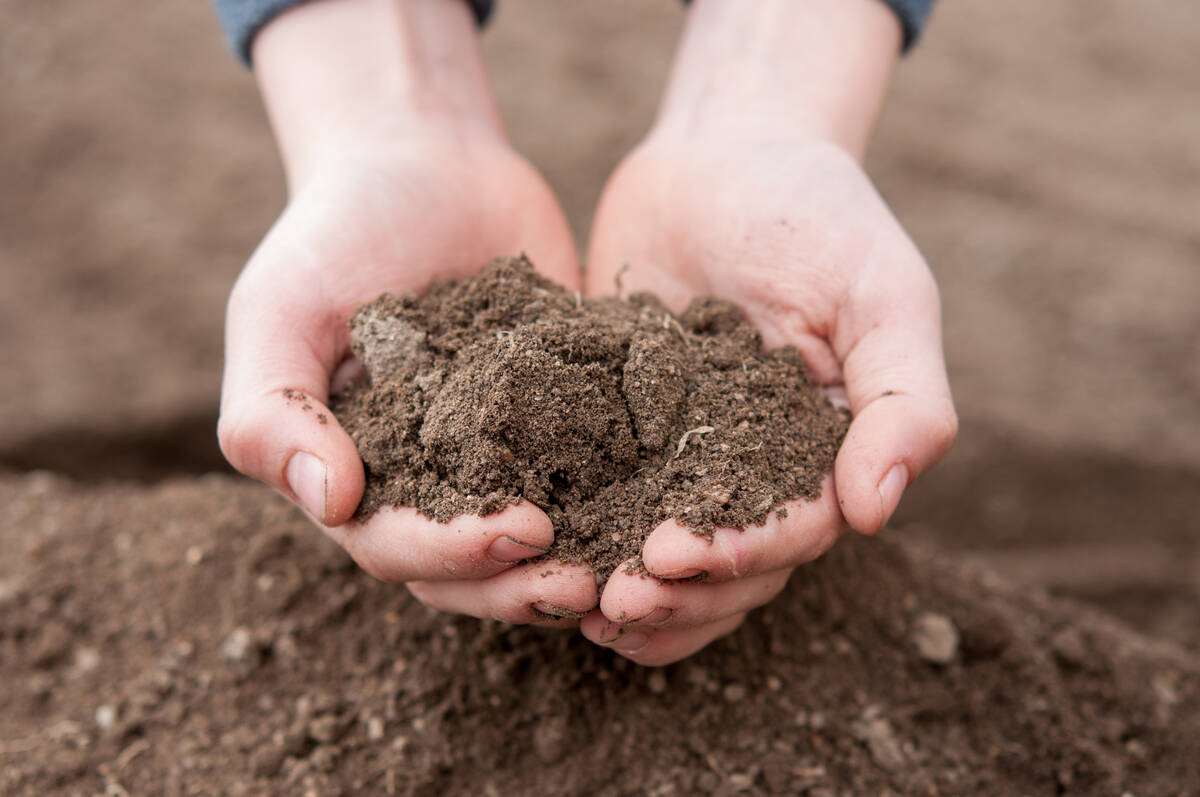Want the scoop on your landscape soil? Try the jar test
Q: Awhile back a representative from the Southern Nevada Water Association said that he had heard that the typical soil type in the valley was a loam. The University of Arizona uses some landscape watering guidelines based on three common soil types. Do you know the three most common soil types here?
A: The University of Arizona may break the soil down into three types for irrigation purposes: gravelly or sandy, loamy soil and a fine textured soil like silt or clay. Loamy soil is a mixture of sand, silt and clay. A sandy loam soil has a higher percentage of sand in it than other types of loam (e.g., silt loam, clay loam). That’s the difference between the types of loam.
Before 2010, I identified the soil at the UNR Water Research Center, near Horse and North Decatur, as a sandy loam. The soil at the research center is a raw desert soil unblemished by development. When organics are added to it, such as compost, the soil holds more water and is chemically more active, but it is still a sandy loam soil. The soil texture doesn’t change (it is still made up of sand, silt and clay), but the organic portion does. This is because, technically, the organic part is not made up of the so-called mineral-only soil texture.
That all changes in housing developments and landscape soil. Some soil is cut. Some soil is manufactured and added to an existing soil. Some soil is left unchanged. Landscape soils are created. They can have a wide variety of changes that might not relate to the original soil at all.
What to do? If you’re not sure of your soil, then perform what’s called a jar test. Put about a cup of your landscape soil in a quart jar nearly full of water. Also put a teaspoon of detergent into it to help the soil particles separate. Shake this mixture hard for about five minutes. Immediately place the jar mixture on a flat surface and let it separate.
With a wax pencil mark the jar after one to two minutes. That is the heaviest portion. It relates to the sand part.
The second portion relates to the silt part. It can take one to several minutes to separate from the sand.
The last portion represents the clay and jar can remain undisturbed overnight.
Occasionally there is a fourth, or floating, layer; it’s considered the organic layer and is discounted.
But those first three components (the sand, silt and clay) and their relative amounts determine your landscape soil’s classification (sandy loam, silt loam, sand, etc.)
Q: When is a good time to fertilize my outdoor succulent garden? Is the commercial stuff adequate?
A: The timing depends on what is planted. If the succulents are winter tender (they may freeze if temperatures get too cold), then delay fertilizing with any amount of nitrogen fertilizer (the first number on the fertilizer bag). Fertilize them only when freezing temperatures are over. This is usually around mid-March but could be earlier depending upon the weather. Watch your weather app for the exact date.
If your succulents are not winter tender, then fertilize them as soon as growth starts. This is usually around mid-February.
Make sure that you apply compost to the surface of the soil lightly and dig it in once a year. Any commercial fertilizer, such as 16-16-16, is good to use. Weeds will grow with water and fertilizer, so keep the area weeded at least once a week when warm weather starts.
Q: When should I fertilize roses? Is the commercial rose food adequate or do you have a better formula?
A: Roses should be fertilized starting around mid-January since they are not winter tender. They should be fertilized every three to four months after that, avoiding the summer heat. Some like to add gypsum along with their initial fertilizer application. Use no more than a quarter of a cup per application.
This is also the time for roses to be pruned. Never prune roses closer than 18 inches from the “knot” at the base. Remember, roses can also be pruned anytime during late summer with hand pruners. The more time and effort you give roses, the more reward you will see.
Commercial rose fertilizer is available and preferred. If using a commercial fertilizer other than a fertilizer specifically for roses, remember that the middle number (phosphorus) should be higher than the first and last numbers. Vegetable fertilizers for flowering plants will also work.
Q: I have been putting coffee grounds and tea leaves in my garden for a long time; so did my father, in our garden in Brooklyn. I was wondering if I put potato, carrot and other vegetable peels in the blender with a bit of water, would they add compost to the garden, or attract animals that I do not want?
A: Part of me says, “No, don’t do it.” And part of me says, “Why not?” I guess my biggest concern is attracting omnivorous vermin like rats. I guess if it’s ground small enough in a blender and watered into a winter garden, it wouldn’t be bad. I do that myself with eggshells because they break down so slowly.
I used a 5-gallon nursery container first for static pile composting this blunder mix. After a few weeks of composting, I start to use the compost in its raw form. I make sure that the particle sizes are small and that everything is run through a blender with a small amount of water first. I use this as a nursery container soil because it’s so gentle.
Q: When watering succulents, I use a moisture meter and water when it reads in the middle not all the way to 5. I start watering them when they are dry. Am I doing it right?
A: I store the moisture meter with the tip sitting in a glass of water so that the tip is saturated with water. If I don’t do that, I’ve had problems until the tip has soaked in water for a time.
When I’m using a moisture meter, I stick the tip of it into the soil very slowly. The tip with shallow-rooted succulents will be pushed into the soil between 1 and 2 inches deep. The depth is important since it gets wetter the deeper it is pushed.
On the gauge, 5 is about halfway between dry and wet. When watering succulents, I am guessing the average is somewhere around two or three at this depth.
But judging moisture when the soil is dry is a good idea: Let the plants tell you when they need water. When leaves start dropping, you have gone too far.
Bob Morris is a horticulture expert and professor emeritus of UNLV. Visit his blog at xtremehorticulture.blogspot.com. Send questions to Extremehort@aol.com.




























